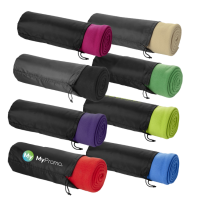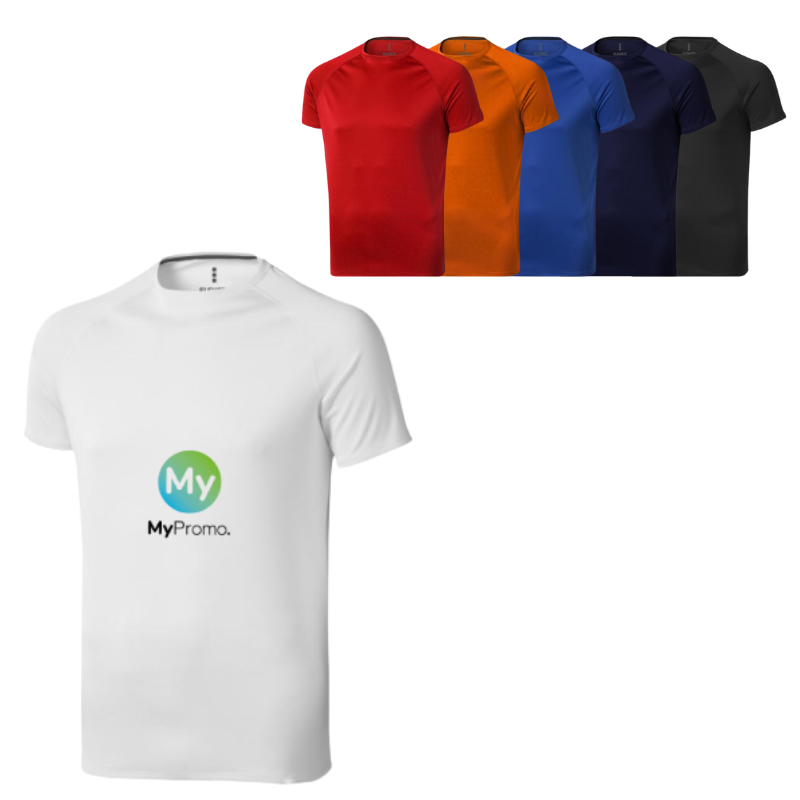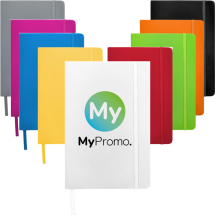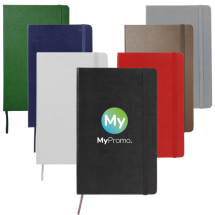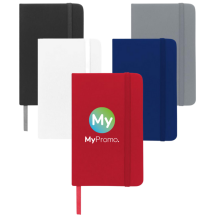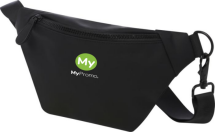Embossing
What is embossing?
Embossing is a printing technique that creates a raised pattern on various materials such as paper, cardboard, leather, and metal. By pressing an engraved die into the surface under high pressure, embossing adds a tactile and visual dimension that enhances the product's appeal. This method is particularly valued in the promotional gifts industry and luxury goods market, where distinction and quality are paramount.A brief dive into history
The art of embossing has historical roots dating back several centuries, initially used to authenticate documents with seals. Over time, this technique evolved into a decorative craft, enhancing the aesthetics of book covers and luxury packaging. Today, it is a popular choice for adding sophistication to business cards, invitations, and promotional items.
The embossing process
The embossing process starts with the creation of a custom-made metal die, which mirrors the desired design. This die is then pressed onto the material under high pressure, often with heat, to reshape the surface, creating a raised effect that can be both seen and felt. The simplicity of the process, combined with the dramatic effect it produces, makes embossing a unique printing technique.
Essential tools and materials for embossing
To achieve successful embossing, specific tools and materials are required:
- A custom-made die, typically crafted from metal
- A counter die, which supports the material from the opposite side
- A suitable stock or substrate, commonly paper or cardstock, for embossing
- An embossing press, which applies the necessary pressure to create the embossed effect
Embossing finds widespread use across various industries. In promotional products, it's common to see embossed logos on leather goods such as personalised portfolios and personalised wallets, or on elegant business card designs aiming to leave a lasting impression. It is also used in book covers, high-end packaging, and greeting cards, offering a sense of luxury and exclusivity.
Advantages of embossing
Key advantages of embossing include:
- Enhanced texture and visual appeal, adding a tactile dimension to printed materials
- Increased perceived value, making products more desirable
- Versatility in applications, suitable for a wide range of materials
Unlike flat printing methods like lithography or digital printing, embossing offers a unique 3D effect that can't be achieved through other techniques. While techniques like hot foil stamping also add a distinct finish to prints, embossing alone provides a tangible depth that enhances both the feel and appearance of the product.
Challenges and limitations
While embossing is highly regarded, it comes with its challenges:
- It is generally more costly than standard printing due to the need for custom dies.
- Not all materials are suitable for embossing; for instance, thinner papers may tear.
- The process is typically slower, requiring more setup time than other printing methods.
Comparison of Printing Techniques
| Technique | Visual Effect | Tactile Effect | Cost | Typical Applications |
|---|---|---|---|---|
| Embossing | Raised, Elegant | High | Moderate to High | Business Cards, Stationery, Packaging |
| Digital Printing | Flat, High-Resolution | None | Low to Moderate | Flyers, Brochures, Posters |
| Screen Printing | Flat, Vibrant | None | Moderate | T-shirts, Banners, Signs |
| Foil Stamping | Metallic, Glossy | Low | Moderate to High | Invitations, Certificates, Labels |
What is embossing used for?
Embossing is employed to add a raised and textured effect to paper, cardboard, and other materials, often seen on business cards, invitations, and promotional items.
How long does the embossing process take?
The duration can vary depending on the complexity of the design and quantity, but generally, it takes longer than standard surface printing.
Can embossing be done on any material?
Embossing is most effective on malleable materials such as paper and leather, but it is not suitable for all materials, especially the most fragile ones.
Is embossing expensive?
Yes, embossing can be pricier than other printing methods due to the customized equipment required and setup.
What is the difference between embossing and debossing?
Embossing creates a raised pattern on the surface, while debossing presses the pattern into the material, creating a recessed effect.


